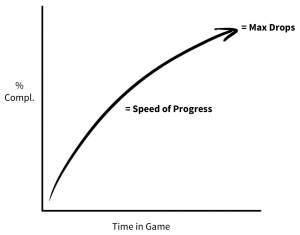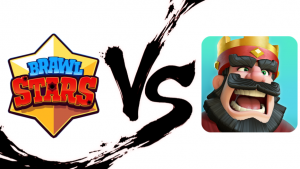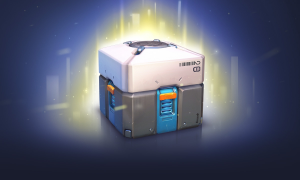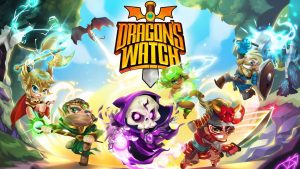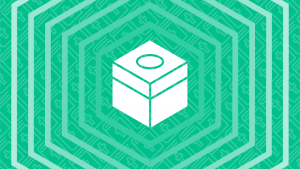How to Design a Gacha System
I recently visited Pocket Gamer Connects in Helsinki and presented a talk on Gacha.
Here is the video of the presentation:
Here are my slides:
Pocket Gamer Helsinki 2017: Recipe for Strong Gacha (PDF)
Summarizing the Presentation, there are 3 key aspects that are key for making a Gacha system work: depth, width and desire.
#1 Depth
- Gacha depth is about ensuring your gacha lasts as long as possible
- The gacha will last a long time until players run out of content (or reasons to pull from the gacha)
- The gacha will last a long time until it feels like a player isn’t making meaningful progress from it
- Gacha depth is critical the more games rely heavily on gacha as its core retention and monetization (ex. all the games copying Clash Royale’s progression systems and gacha)
- The deeper your gacha, the higher your long term retention + max economy spend will be, which are critical for success in F2P
- To know what the depth of your gacha model is, you need to model your max drops. (read here if you don’t know what drops means)
- Build a model using Excel, Google Spreadsheets or code it
- This model should take in key variables which impact the pacing and depth of your gacha:
- How much content you have
- What your duplicates are used for
- Quantity of Rarities, and their drop rates
- Pool Changes (as in adding and removing what content can drop from the gacha)
Using the model you can calculate a graph showing you effectively what your gacha will feel like.
- This should show you clear dynamics of how to increase the # of drops your system can handle:
- Adding Content adds depth, but it depends on what the rarity type is
- Low Drop Rates for higher tier means flatter, more frustrating progress
- Opening up the pool over time means that players can feel like the gacha is “refreshed” and interesting again
- ex. Hearthstone releases new content packs every few months which instantly feel rewarding to open
- ex. Clash Royale opens up the Gacha pool over time to give compelling reasons to spend each time you move up an Arena tier
- ex. Dragonvale opens up new Gacha pool possibilities each time you unlock a new element in the game
- Giving duplicates meaning to your progress (not just converting to dust) adds exponential depth to your gacha system.
- Dust gives players a better baseline of progress, at the cost of progress speed (lowering your depth)
- Duplicates that are required to progress (ex. Clash Royale’s duplicate system) mean that in order to upgrade cards you require sometimes hundreds of duplicates (depending on the rarity) adding significant depth AND making each drop feel rewarding
#2 Width
- Gacha width is about ensuring that your systems put pressure on having a wide collection of content as much as possible.
- Gacha width is about ensuring that players don’t feel terrible after bad drops.
- To do this, make all content as relevant and helpful as possible.
- 4 example features that drive width:
- Loadout Size
- Asking the player to bring in a variety of items into the core battle
- ex. in Call of Duty your Loadout includes a gun, pistol, weapon attachments, etc.
- ex. in Hearthstone you bring in 30 cards, Clash Royale you bring in 8
- ex. in Contest of Champions you bring 3 heroes to a campaign
- you want just enough that collecting matters, but not so many that players can create a perfect team
- Asking the player to bring in a variety of items into the core battle
- Explicit Strengths and Weaknesses
- Element systems are needed to ensure that there is no perfect team, and players need to constantly shift their team around to take advantage of the situation.
- ex. Contest of Champions has 6 elements in their game, plus synergy bonuses
- Element systems are needed to ensure that there is no perfect team, and players need to constantly shift their team around to take advantage of the situation.
- Implicit Counters
- Fostering debate amongst your audience about what the optimal setup for a meta is will drive strong collection.
- The more content the player has — the more they can experiment or be prepared for a shifting meta
- Game Modes
- Including game modes within your game which explicitly rewards players for having a large quantity of heroes.
- ex. Gauntlet mode in Heroes Charge or Galactic War in Galaxy of Heroes: the more heroes you have, the longer you’ll survive, the higher you are rewarded
- Including game modes within your game which explicitly rewards players for having a large quantity of heroes.
- Loadout Size
#3 Desire
- Gacha desire is about ensuring that your game’s progress is effectively paced by the gacha content. Players NEED the gacha in order to progress in the game.
- Look at your systems, how important is the content of the gacha to progress?
- How important is Skill? can a player with high skill breeze through your game? will a player with low skill feel like the gacha isn’t helpful?
- Are there mechanics within the game which water down the usefulness of the gacha?
- ex. progression systems on the side of the gacha system which are more important than the content of the gacha
- Look at your systems, how important is the content of the gacha to progress?
These 3 lenses can be used to look into your own Gacha to ensure it will be as powerful as you need it to be.
In the coming months, pocketgamer will post the video of the presentation. I’ll post it then.
Addendum
Added the video from PocketGamer.biz



